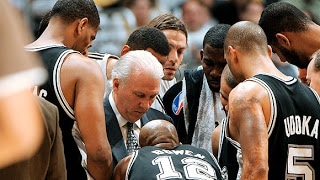John C. Maxwell recently shared this post on his ‘Leadership Wired Blog’ and it is phenomenal, enjoy!
Most teams don’t naturally get better on their own. Left alone, they don’t grow, improve, or reach championship caliber. Instead, they tend to wind down. The road to the next level is always uphill, and if a team isn’t intentionally fighting to move up, then it inevitably slides down.
The team loses focus, gets out of rhythm, decreases in energy, breaks down in unity, and loses momentum. At some point, it also loses key players. And it’s only a matter of time before it plateaus and ultimately declines into mediocrity.
The good news is that your leadership style can build a winning team, or transform the one you have. Here are four leadership styles you can employ that can make or break your ability to succeed – because no one succeeds alone.
4 LEADERSHIP STYLES TO HELP YOU GET THE MOST OUT OF YOUR TEAM
LEADERSHIP STYLE #1: ENCOURAGE SIGNIFICANCE
One is too small a number to achieve greatness. Become a better team leader by thinking about the greatest dream you have for your life.
Start by asking yourself:
- Is my dream bigger than me?
- Does it benefit others as well as myself?
- Is it worth dedicating part of my life to?
If you answer yes to all of these questions, then think about the kinds of people who should join you to achieve that dream. Make a list of the like-minded people you know who might want to join you in the process, then begin inviting them to take the journey with you. And be on the lookout for others who would benefit from being part of the team.
LEADERSHIP STYLE #2: SHARE IN THE BIG PICTURE
The goal is more important than the role. A team isn’t supposed to be a bunch of people being used as a tool by one individual for his or her own selfish gain. Members of a team must have mutually beneficial shared goals. They must be motivated to work together, not manipulated by someone for individual glory.
To employ this leadership style, think about a team you are currently part of (preferably one with a big goal). What kind of attitude do team members have about the big picture? Are they team players who desire to do whatever it takes for the team to succeed? Or do they desire to benefit only themselves?
Begin to foster a team mind set in others by modeling a willingness to serve the big picture, rather than yourself. Motivate people by painting the big picture. Publicly honor team play, and give rewards to people who sacrifice for the good of the team.
LEADERSHIP STYLE #3: BENCH STACKING
Every team has three groups of players. First, there are starters, who directly add value to the organization or who directly influence its course. Second, there are bench players, who add value to the organization indirectly or who support the starters who do.
The third group is a core group within the starters that I call the inner circle members. These are the people that without whom, the team would fall apart.
Your job is to make sure each group is continually developed so that bench players are able to step up to become starters, and starters are able to step up to become inner circle members.
To employ this leadership style, try this exercise: Write the names of the people on your team who are starters. Now, look at the people supporting your starters. These are your bench players. How can you lead, train, or inspire them in order to create a strong, deep bench? What value can they add from their position, and how can you create an environment for them to grow and succeed?
Every team member is valuable in their own way. But it’s important to figure out which group they’re in. Moving in from bench to starter to inner circle member, you’ll discover that each group becomes more and more important to the big picture vision for the team. Develop your bench, and you’ll always have a pool of fantastic team players who can help the team win.
LEADERSHIP STYLE #4: CLEAR COMMUNICATION & GOOD LISTENING
As the leader of an organization, you set the tone for communication. Your communication must be consistent, clear, and courteous. Leaders must also be good listeners. When leaders don’t listen…
- They stop gaining wisdom.
- They stop “hearing” what isn’t being said.
- Team members stop communicating.
- Their indifference begins to spread to other areas.
Ultimately, poor listening leads to hostility, miscommunication, and a breakdown of team cohesion.
To employ this leadership style, give yourself a 360-degree listening review. Ask for feedback concerning your listening skills from your boss or mentor, your colleagues, and your subordinates. If you don’t get good grades from all of them, then quiet down and listen up. This is one of the most effective ways to improve as a communicator.







